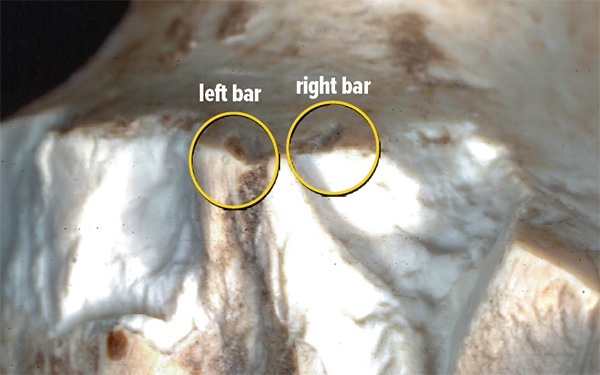Under the Microscope: Ivory Pomegranate Inscription
Sidebar to: First Person: A Scepter from the Temple?
Scholars have debated at length whether the letters as reconstructed from the ivory pomegranate inscription are authentic. Do they actually go into the old break, or do they stop just short of the break—the latter of which suggests that the inscription is a modern forgery? In a meeting at the Israel Museum in June 2015, paleographers André Lemaire, Ada Yardeni and I studied the inscription together, focusing particularly on the letter taw. We each agreed that this crucial letter did in fact go into the old break and is thus ancient. Here, I analyze digital photos of the letter taw, which were taken by Reflectance Transformation Imaging specialist Bruce Zuckerman of the University of Southern California.
Looking at the image, the left bar of the letter taw was clearly broken in antiquity (notice the yellowish edge), while the right bar was damaged in modern times (see the white area). Most important, the left bar has a clear V-shape in the section, which demonstrates that the bar was not engraved in modern times and that the engraver did not stop before the breakage, as erroneously claimed by Yuval Goren.

The surface of the ivory pomegranate has a yellowish-brownish color caused by oxidation, often called a patina, which developed during the 3,000 years since its manufacture. This extremely fine layer of oxidation seals the surface, and under it the ivory remained white, as seen in the modern breakage. Any modern attempt to engrave on the ivory’s surface will expose the white material and thus indicate the modern engraving.
Already a library member? Log in here.
Institution user? Log in with your IP address.

